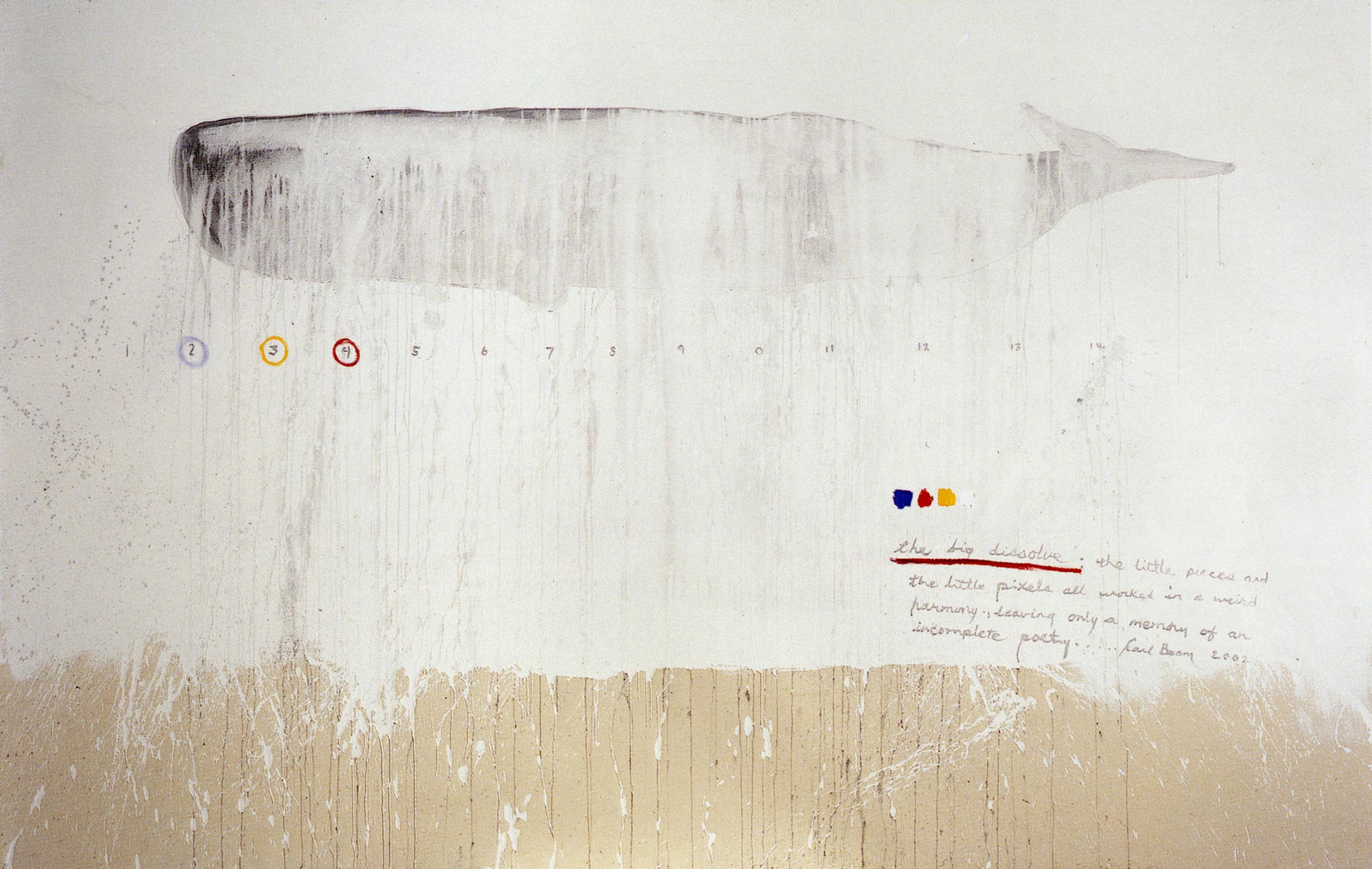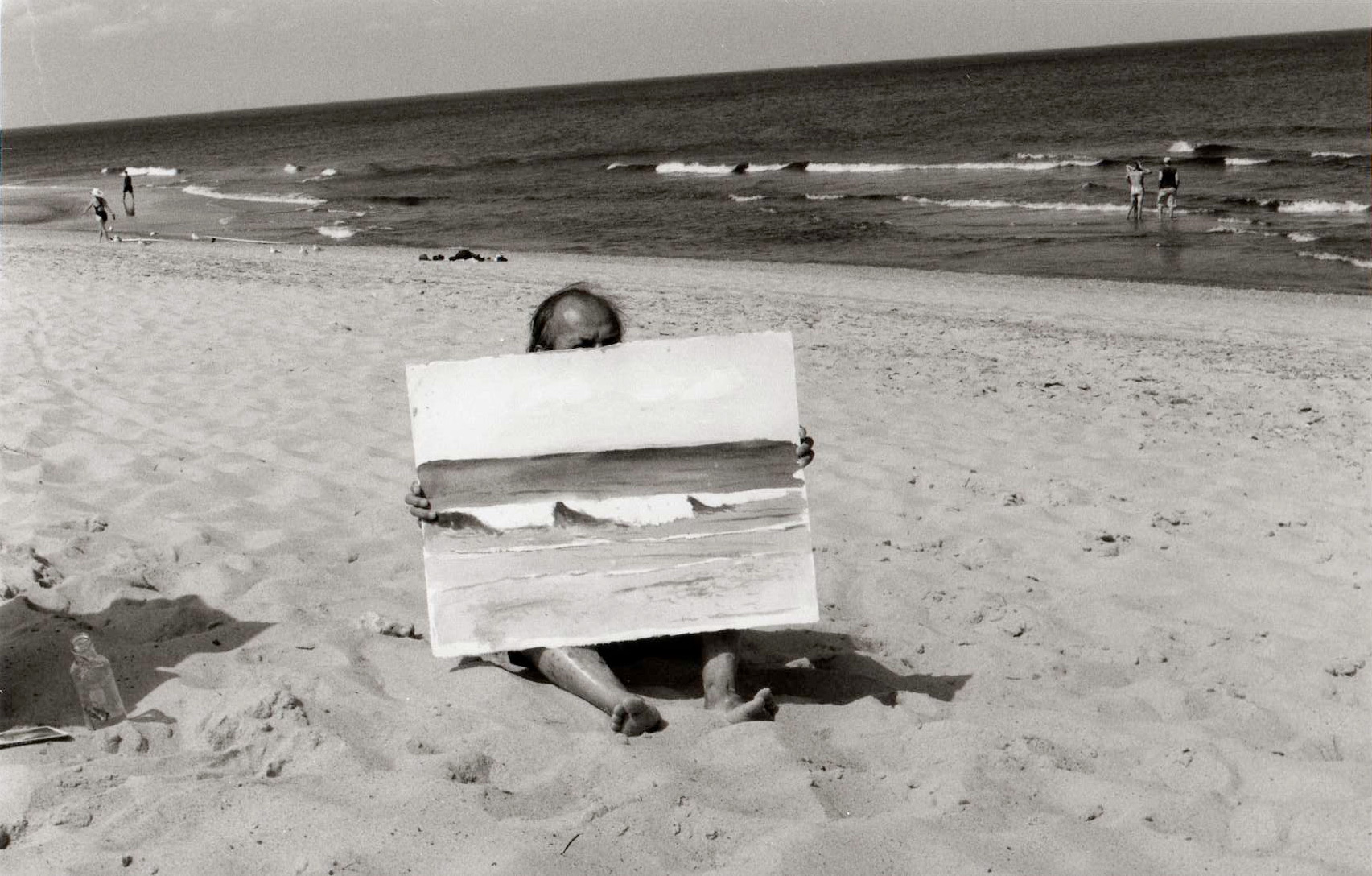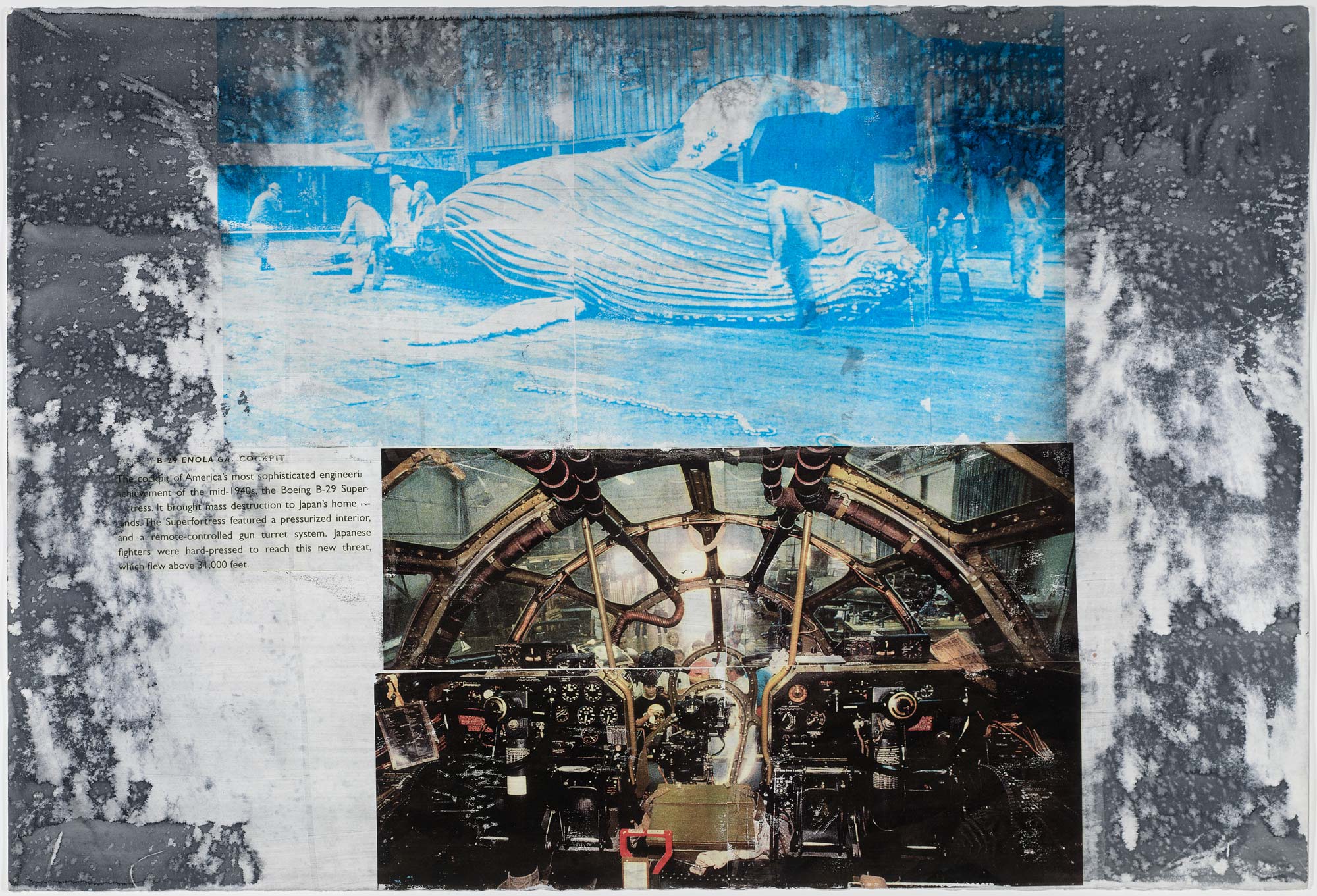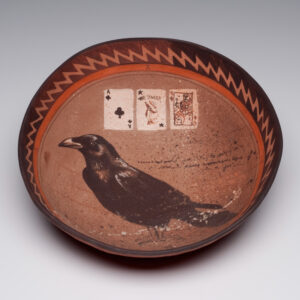Big Dissolve 2001

Carl Beam, Big Dissolve, 2001
Acrylic and pencil on canvas, 213.5 x 335.5 cm
Collection of Steven and Mary Orfield
© Estate of Carl and Ann Beam / CARCC Ottawa 2024
In Big Dissolve, a whale is depicted almost as a ghostly shadow suspended in fields of white painterly washes alongside a number sequence, colour index, and the following poem, inscribed on the painted surface: “the big dissolve: the little pieces and the little pixels all worked in a weird harmony, leaving only a memory of an incomplete poetry.” The idea of “dissolve”—of breaking down, disappearing, letting go—is expressed directly in the overpainting of the whale, which nearly obliterates the image from the composition, causing the mammal to melt into its background.
Created at a time when Carl Beam had found peace working in his adobe studio on Manitoulin Island, Big Dissolve is a large-format painting from the series The Whale of Our Being, 2001–03, a body of work that brought Beam’s ecological concerns more directly into his art practice. In this series, he uses the image of a sperm whale as a metaphor for the natural ecosystem and a symbol of the relationship between the human and natural worlds. For Beam, the whale served as a bellwether of the deterioration of the natural environment and the health of animal species that are under threat of extinction because of human activities. Along with Big Dissolve, the rest of the works in The Whale of Our Being continue Beam’s investigation of the connections among the human, animal, and plant realms. The moral of the series is that humans are bound to the same fate as whales.


The Whale of Our Being was Beam’s last major series. And while it brought together the broader themes and intellectual concerns he had engaged with throughout his prolific career, the idea for the series was cemented during a family trip to Cape Cod, Massachusetts, in 2000. Beam spent the long summer days at the edge of the Atlantic Ocean, shooting rolls of film that would eventually be used in paintings and photo-emulsion works such as Self-Portrait at the Ocean of Our Great Unlimited Stupidness, n.d.
Big Dissolve is best understood as a visual poem critiquing the practice of factory fishing, in which the seas are pillaged, and entire species of sea mammals and fish are catastrophically depleted. Other works in The Whale of Our Being, such as Driver, 2001, juxtapose images of a whale being carved on a factory ship with pictures of the cockpit of the Enola Gay, the plane that dropped the atomic bomb on Hiroshima. These uncomfortable images underline Beam’s message that “what happens to the whale happens to us.” In contrast, Big Dissolve is a relatively minimal work, but nonetheless a haunting and meditative one, especially because of the allusive poem incorporated into the piece’s formal structure. The “big dissolve” signifies the rapid decline of the whale population due to seemingly uncontrolled harvesting by factory trawlers.

 About the Author
About the Author
 More Online Art Books
More Online Art Books
 Acknowledgements
Acknowledgements